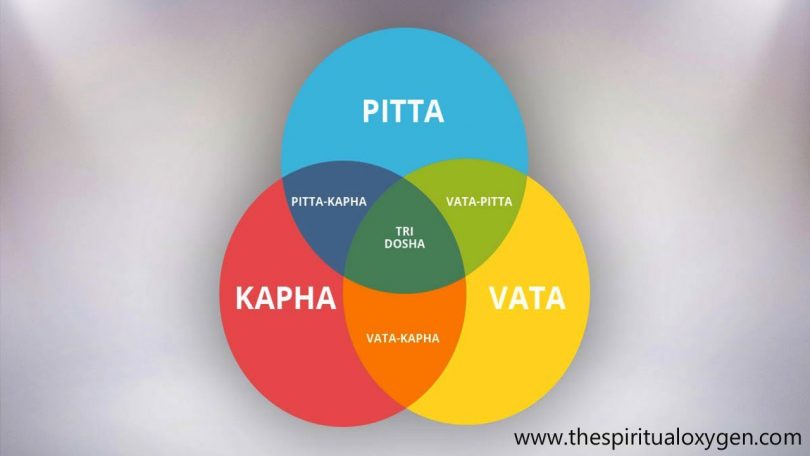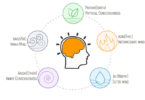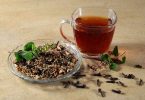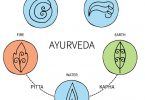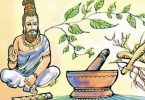The concept of tri dosha is found in Ayurveda. Ayurveda roughly can be translated as “knowledge of life”. The origin of Ayurveda could be more than 5000 years when writing system was not even evolved. Ayurveda is the part of Atharva veda as well as an ancient medical system of India.
Accoding to Ayurveda the whole universe is made of five primordial elements known as Panchmahabhuta. Indian philosophy like Sankhya darshan – these five elements of universe are Akasha (space), Vayu (air), Agni (fire), Jal (water), and Prithvi (earth).
Relation between five elements and dosha
These elements are inanimate, but when they come in certain combination, give rise to three main biological forces in the human body, these combinations known as tri dosha (three personality or constitution).
These three combinations (tri dosha) are VATA, PITTA and KAPHA. They can be defined as three foundational energies or principles which govern the function of our bodies on the physical and emotional level (all psycho-physiological functions). Each individual has these elements in a unique combination, which is the cause of verities in our personality and nature.
Our PRAKRITI (personality and nature) is based on these three combinations (tri dosha). When one dosha is typically predominant in our constitution then balance in it brings the health or imbalance in it produces diseases.
The understanding of dosha can help you in making better choices for food, building better lifestyle. Some understanding of Ayurveda is important for everyone because it is the science of everyday life.
Let’s look at each of them in brief details.
Vata Dosha
Vata is combination of Vayu (air) and Akash (space) elements. Thus Vata has qualities which are similar to these elements. Vata in very much like the wind means ‘that which moves things’ thus vata is responsible for all physical processes in general and as well affects the mind. Vata is consider as one of the important dosha from tri dosha.
Vata is dry, light, rough, cold subtle and agitated in qualities thus influence the function of body as well function of mind.
Imbalance in Vata can cause emaciation, liking of warmth, tremors, debility, distention and constipation, as well as sensory disorientation, incoherent speech, difficulty in focusing and making decisions and have trouble sleeping. Colon thighs, hips, ears, bones and organ of touch are more affected by Vata. This becomes more apparent when they are under stress and cool emotions like worry, fear and anxiety are always challenging for them.
Here some suggestion for balancing Vata dosha
- Diet – the food is most influencing to doshas. A nutritive, strengthening diet is good for vata.food should be warm, bit heavy and moist with frequent and regular meals. Spices like cinnamon, cumin, fennel, ajwain can be used in cooking to regulate the digestion. Some herbs like ashwagandha, shatavari, bala, musali and kapikacchu are very beneficial. Cold water or ice be avoided, as well as stimulating beverages such as coffee.
- Massage – it is one of the best way to bring the balance of Vata dosha. Warm and heavy oils like sesame and almond can be used for massage. The best sites are the feet, the top of the head the back and lower abdomen.
- Lifestyle – make sure you always have proper sleep and don’t stay up late at night. Always do some mild physical exercises. Sunbathing is recommended. Meditate which helps you in giving up worries, fear, anxiety and negativity. Avoid cold, overwork and hard physical work. Don’t do over talking and thinking. Stay away from excess stimulation including mobile phones, TV and movies.
- Purification practices (panchkarma) – basti (enema therapy) and nasya (nasal cleaning) is indicated as the anti vata treatment in severe conditions.
Pitta Dosha
Combination of Agni (fire) and Jal (water) give rise to PItta. Pitta dominated people have many qualities of fire within them. Pitta also known as bile means is ‘that which digests things’. Pitta dosha is responsible for all chemical and metabolic transformation in the body. Pitta is very important because it keeps fire and water together as they are opposite in nature.
The function which also regulated by Pitta are mental digestion, capacity to perceive reality and understand things. Pitta is little oily, sharp, hot, light unpleasant in odor, mobile and liquid. They tend to have moderate weights and good musculature.
Out of balance Pitta causes yellowness (stool, urine, eyes, and skin), burning sensation, diarrhea uncontrolled hunger, thirst, weakness in liver, spleen, as well as difficulty in sleeping. Pitta is presented as bile and acids and located in the small intestine, stomach, sweat, lymph, blood and eyes. They are challenged by the hated emotions of anger, resentment and jealousy.
Here are some suggestions for balancing Pitta dosha
- Diet – Pitta types of food should be cool, heavy and a little dry and without excessive spices. Cool water can be taken. Cooling and mild spices like turmeric, fennel, coriander and mint are best. Some herbs like shatavri, amalaki, saffron, gotu kola, bhringaraj and comfrey root are very beneficial.
- Massage – cooling oils like coconut, sunflower or ghee can be used for body massage. Brahmri and bhringraj oils can be applied to the top of the head, forehead and heart.
- Lifestyle – too much sun and exposure to heat should be avoided. One should resort to cooling air, cool water; moon light, gardens and lakes. Try to be sweet with your speech and content. Meditation like zen and vipassana. Cooling asana and pranayama practices will be so helpful.
- Purification practices (panchkarma) – virachana purgation is indicated with strong laxatives like rhubarb root, senna and aloe.
Kapha Dosha
Within the kapha dosha there is a predominance of the earth and water elements therefore it also known as phlegm. It means ‘that which holds things together’. Kapha dosha is responsible for structure and stability which is property of earth and lubricant and fluidity which is the property of water elements. Kapha is wet, cold, heavy, dull, sticky, soft and firm. Kapha dosha gives stability, lubrication, holding and patience.
It also provides emotional support in life, and relates to positive emotional traits like love, compassion, modesty, patience. It also forms the protective coverings and fluid shock absorber for joints, brain (CSF) and spinal cord.
When kapha dosha is out the balance it causes depression of the digestive fire, nausea, lethargy, heaviness, looseness of the limbs, cough and excessive sleep. It also results in accumulation of body waight, inhibits normal function and causes hypoactivity. Kapha is produced above as phlegm in the lungs and stomach as well as chest, throat, head, sides, fat, nose and tongue.
Here are some suggestions for balancing Kapha
- Diet – food with opposite qualities like warm, light and dry food are advised and food prepared with hot spices. Occasional fasting or skipping a meal is good. Cold or ice water should be avoided as well. Hot species like black pepper, cloves, mustered, ginger for improving metabolism. Some herbs like guggul, basil, shilajit, saffron, gotu kola are very beneficial.
- Massage – dry or strong massage is good or massage with such light oils as mustered or flaxseed oil.
- Lifestyle – strong and aerobic exercises and outdoor activity should be done. Sunbathing and exposure to warm and dry breezes. Stay active with physically and mentally. Travel and pilgrimage are excellent. Avoid over sleeping and cold and damp environment. Try to keep your mind engaged with new thoughts, projects and informations. Some kind of dynamic Meditation and bhakti yoga is best.
- Purification practices (panchkarma) – vaman (vomiting) with salt, calamus and lobelia.
We are all have a unique combination of these tri dosha (foundational energies). Pitta is our metabolism, Kapha is our structure and Vata is the mobility. They bring action and life into creation. Without all these three energies, we simply could not exist.
This is just a informational post based on different references and do not suggested any treatment to anyone. Must consult with a Ayurvedic doctor.

